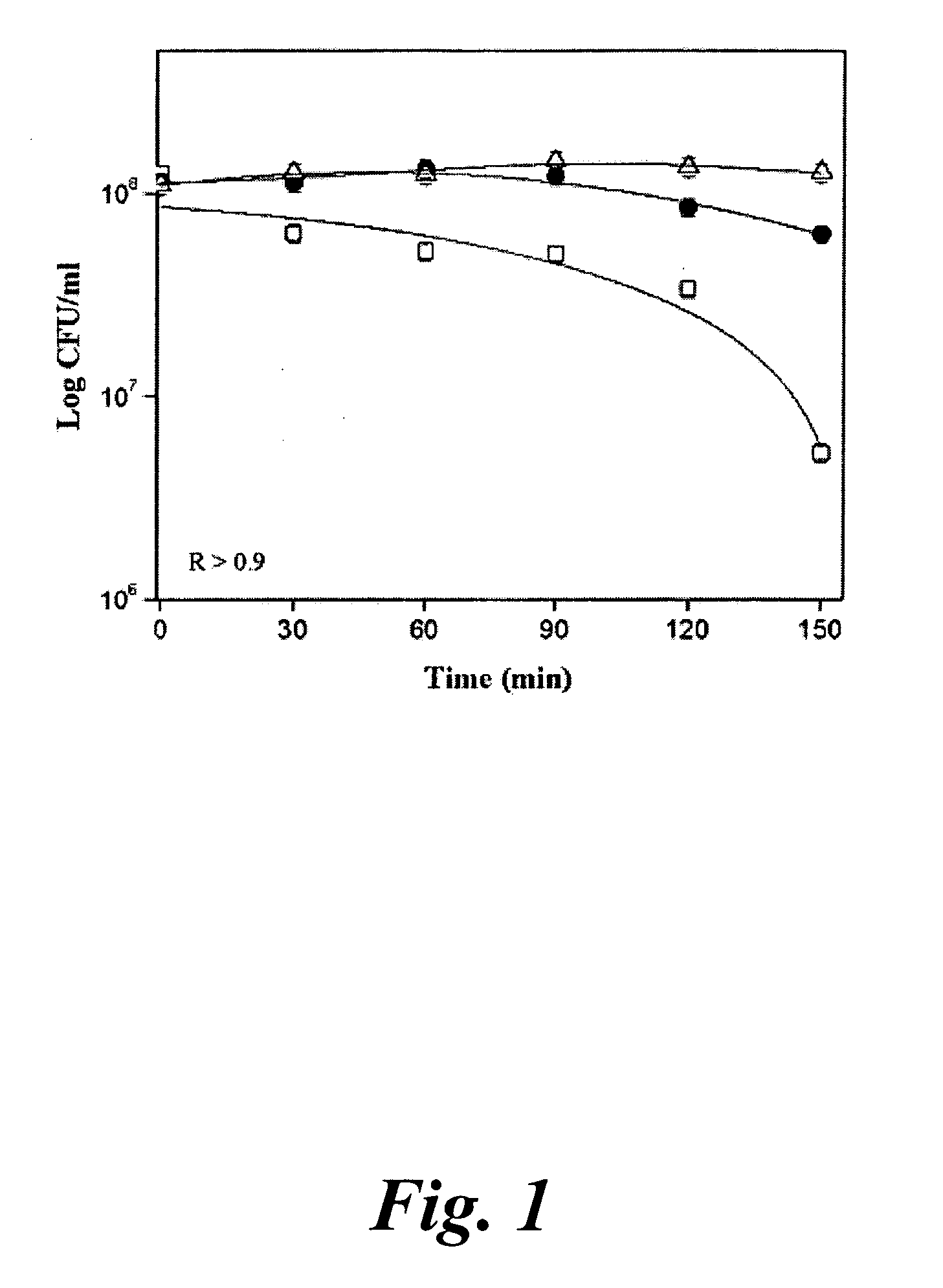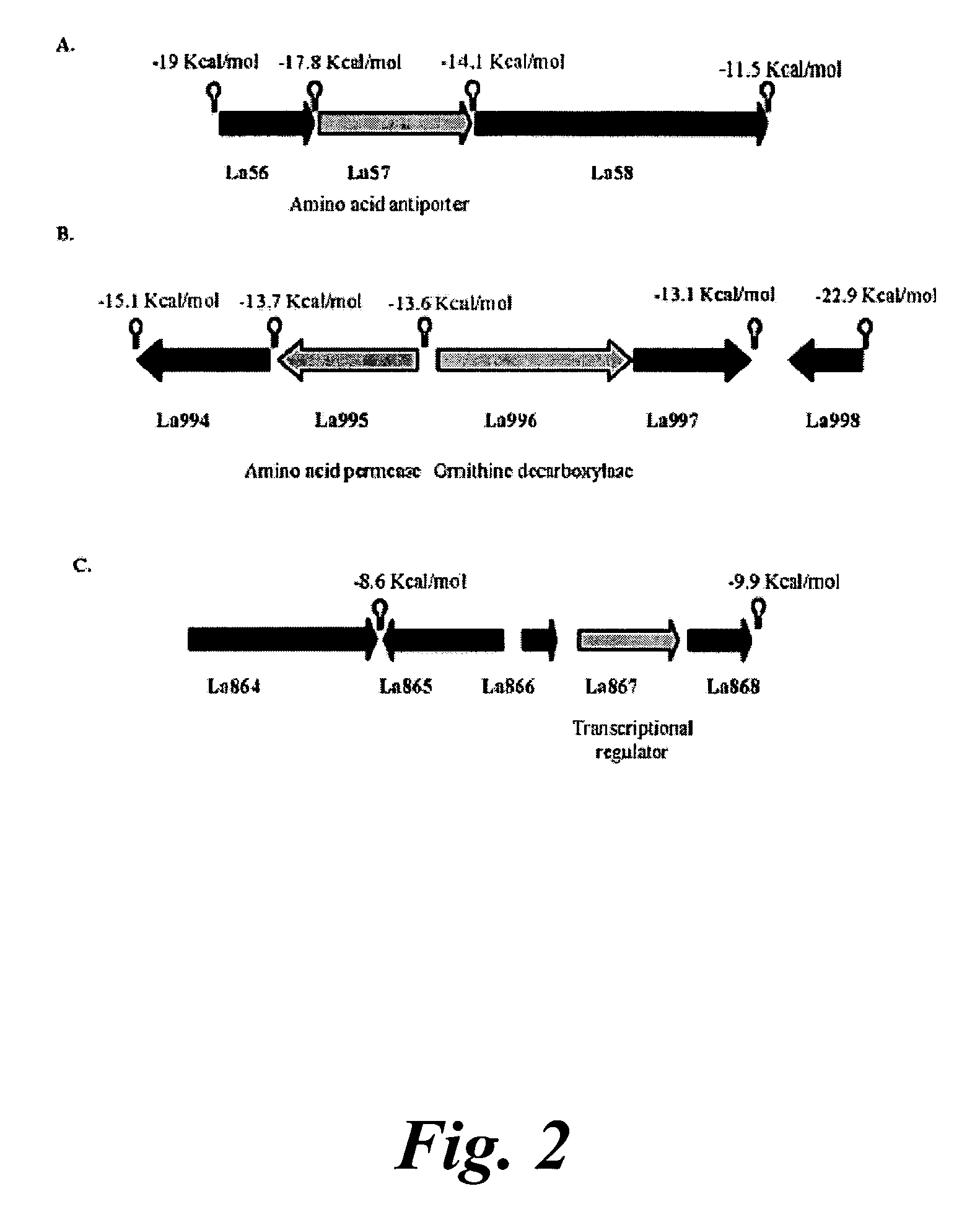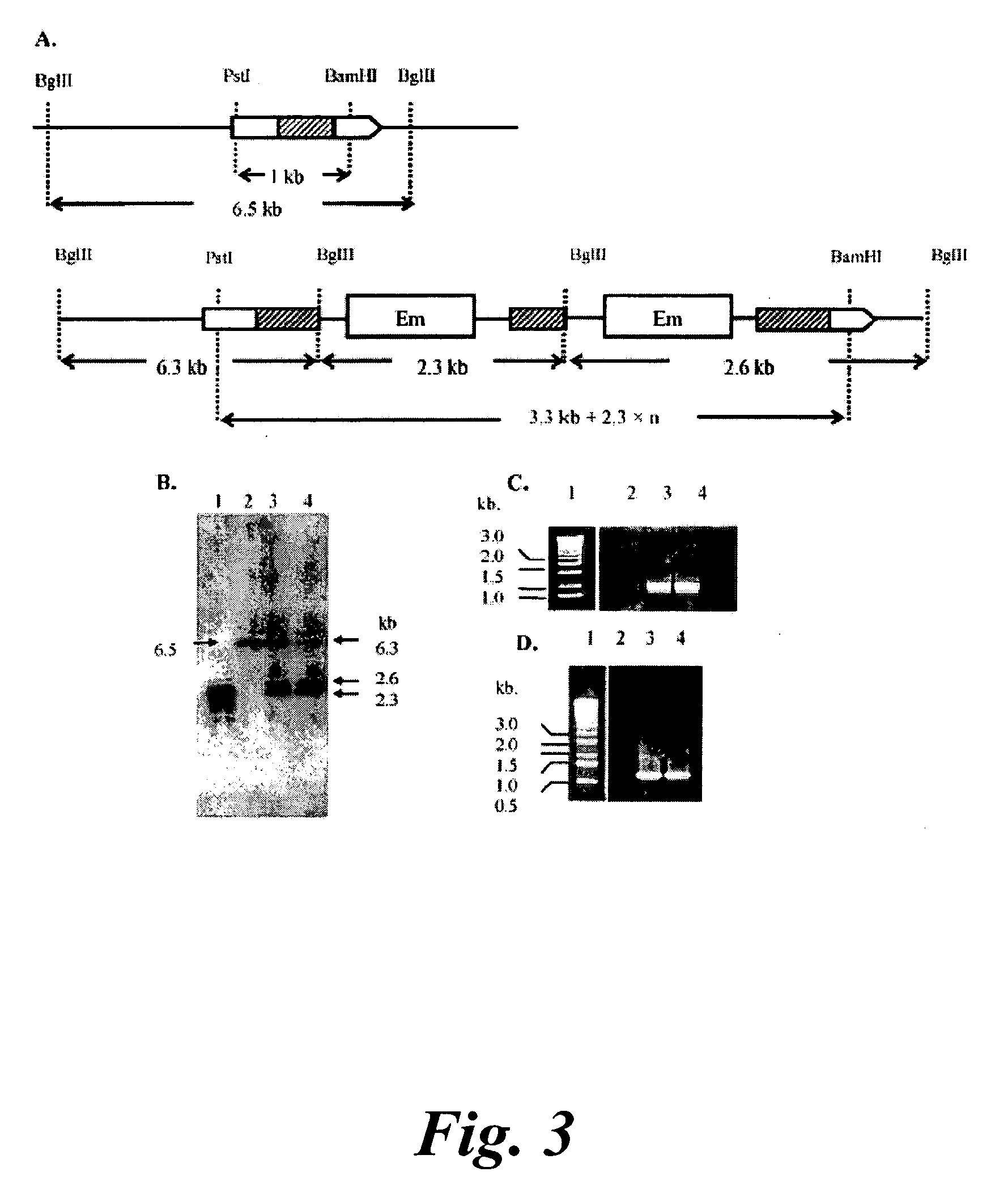Lactobacillus acidophilus nucleic acid sequences encoding stress-related proteins and uses therefor
a technology of stress-related proteins and nucleic acids, which is applied in the field of polynucleotides isolated from lactic acid bacteria, can solve the problems of lactic acid bacteria being exposed to toxic byproducts of their growth, interfering with the growth of undesirable bacteria, pathogens, yeasts, etc., and achieves the effect of increasing the ability of an organism to surviv
- Summary
- Abstract
- Description
- Claims
- Application Information
AI Technical Summary
Benefits of technology
Problems solved by technology
Method used
Image
Examples
example 1
Gapped BlastP Results for Amino Acid Sequences
[0227] A Gapped BlastP sequence alignment showed that SEQ ID NO:2 (480 amino acids) has about 37% identity from amino acids 20-477 with a protein from Clostridium perfringens that is homologous to a glutamate gamma-aminobutyrate antiporter (Accession Nos. NP—562976.1; NC—003366), about 39% identity from amino acids 20-471 with a protein from Clostridium perfringens that is homologous to an amino acid antiporter (Accession Nos. NP—562216.1; NC—003366), about 35% identity from amino acids 15-476 with a protein from Lactococcus lactis subsp. lactis that is a glutamate-gamma-aminobutyrate antiporter (Accession Nos. NP—267447.1; NC—002662), about 35% identity from amino acids 15-476 with a protein from Lactococcus lactis that is a glutamate / gamma-aminobutyrate antiporter (Accession No. sp|O30417|GADC), and about 37% identity from amino acids 20-476 with a protein from Listeria innocua that is homologous to an amino acid antiporter (acid resi...
example 2
Proteins Induced at Low pH
[0368] The most highly expressed proteins by L. acidophilus during growth at pH 4.5 and 5.5 were determined by microarray analysis according to the methods that follow. The results are shown in Tables 4 and 5.
RNA isolation
[0369] For acid stress assays, aliquots (10 ml) of L. acidophilus cultures grown on MRS to OD600=0.3 were transferred to MRS adjusted to desired pH with lactic acid. After 30 minutes cells were harvested and RNA was isolated. For carbon source utilization experiments, similar aliquots of L. acidophilus cultures were grown on semi-synthetic medium (Barrangou et al. (2003) Proc. Natl. Acad. Sci. U.S.A. 100:8957-8963) supplemented with select sugars to OD600=0.6. Total RNA was isolated by using Trizol (Gibco / BRL), following the supplier's instructions.
cDNA Probe Preparation and Microarray Hybridization
[0370] Identical amounts (25 μg) of total RNA were aminoallyl-labeled by reverse transcription with random hexamers in the presence of a...
example 3
PFAM Results for Amino Acid Sequences
[0372] Table 6 shows the top PFAM results for the amino acid sequences of the invention.
PUM
| Property | Measurement | Unit |
|---|---|---|
| pH | aaaaa | aaaaa |
| pH | aaaaa | aaaaa |
| optical density | aaaaa | aaaaa |
Abstract
Description
Claims
Application Information
 Login to View More
Login to View More - R&D
- Intellectual Property
- Life Sciences
- Materials
- Tech Scout
- Unparalleled Data Quality
- Higher Quality Content
- 60% Fewer Hallucinations
Browse by: Latest US Patents, China's latest patents, Technical Efficacy Thesaurus, Application Domain, Technology Topic, Popular Technical Reports.
© 2025 PatSnap. All rights reserved.Legal|Privacy policy|Modern Slavery Act Transparency Statement|Sitemap|About US| Contact US: help@patsnap.com



